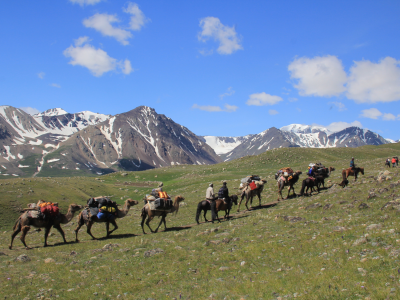Geology Lunch – Glacial Cycles – 9/18/2018
Come to GeoLunch, Tuesday 12 – 1 September 18, 2018
Carnegie 219
Pizza and cider to be served while we speak about glaciers.
What drives glacial cycles?
A bi-hemispheric perspective on the Last Glacial Termination using Glacier chronologies from the Southern Alps of New Zealand and the Altai Mountains of western Mongolia.
ABSTRACT: A major objective of earth and climate sciences is to understand the underlying operation of Earth’s climate system. Late-Pleistocene ice ages represent the largest changes in Earth’s climate over the past one million years. The most recent glacial-to-interglacial transition represents the last time atmospheric CO 2 rose by a substantial amount prior to the industrial period. However, our understanding of future climate sensitivity is uncertain, with current estimates ranging from 1 – 6
°C rise per doubling of atmospheric CO 2 (IPCC, 2014). Thus, a more complete understanding of the last glacial termination will hone our understanding of basic climate dynamics and allow ongoing global warming to be placed into a paleoclimatic context to help to improve accuracy of future climate predictions. This talk will present glacier chronologies of the last glacial maximum and subsequent recession from locations along a north-south Australasian transect: the Southern Alps of New Zealand, the Mongolian Altai Mountains, and the Haizi Shan of western China. These emerging chronologies allow us to reconstruct local climates and answer important questions about forcing factors that punctuated and subsequently ended the last ice age.
BIOGRAPHY: Peter Strand is a PhD candidate at the University of Maine. His research uses a range of geomorphologic and geochemical techniques, such as 10 Be and radiocarbon dating, along with glacial geomorphic mapping aided by drone. Peter’s research has brought him to many corners of the world. His field areas include: Eastern Tibetan Plateau; Mongolian Altai Mountains; Southern Alps of New Zealand; Northern Andes, Peru; and Dry Valleys, Antarctica.
